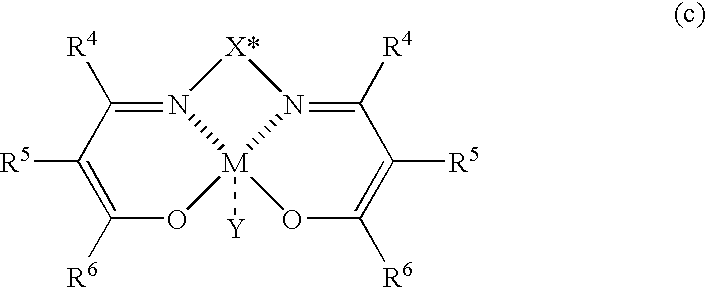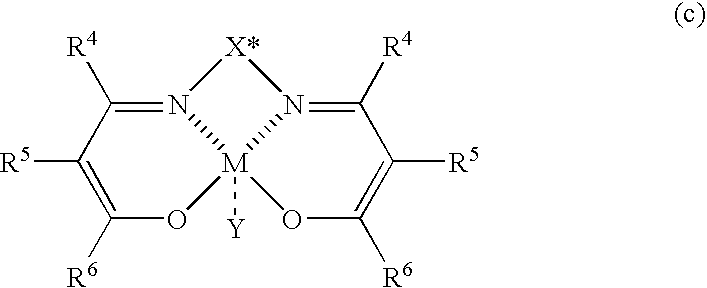Process for producing optically active nitroalcohols
a technology of optically active nitroalcohol and process, which is applied in the field of process for producing optically active nitroalcohol, can solve the problems of insufficient methods for practical use, large amount of expensive asymmetric ligands or rare earth metal compounds, and reaction requirements, etc., and achieves high productivity
- Summary
- Abstract
- Description
- Claims
- Application Information
AI Technical Summary
Benefits of technology
Problems solved by technology
Method used
Image
Examples
example 1
Synthesis of (1R)-1-(2-naphthyl)-2-nitroethanol
[0093]A solution of N,N′-bis[2-(2,4,6-trimethylbenzoyl)-3-oxobutylidene]-(1S,2S)-bis(3,5-dimethylphenyl)ethylene-1,2-diaminato cobalt (II) complexes (7.53 mg, 0.01 mmol, 2 mol %; formula (c-4)) in dichloromethane (2.0 ml) was added into a reaction vessel at room temperature under a nitrogen atmosphere, and was cooled to −70° C. Thereafter, to the reaction vessel were added a solution of 2-naphthaldehyde (78.1 mg, 0.5 mmol) in dichloromethane (1.0 ml), a mixture of nitromethane (1.0 ml, 18.5 mmol) and dichloromethane (1.0 ml), and diisopropylethylamine (64.7 mg, 0.5 mmol) in this order. The reaction mixture was stirred for 76 hours, and THF containing water was then added into the reaction mixture to stop the reaction. After a usual aftertreatment was performed, the resultant crude product was separated and purified by silica gel chromatography (hexane:ethyl acetate=4:1) to give 1-(2-naphthyl)-2-nitroethanol (89.7 mg, yield 83%). The opt...
examples 2 and 3
[0094]The reaction was carried out in the same manner used in Example 1 except that the reaction temperature was in the range between −70° C. and temperatures shown in Table 1. The reaction time, and the yield and the optical purity of the resultant (1R)-1-(2-naphthyl)-2-nitroethanol were shown in Table 1.
[0095]
TABLE 1ReactionReactionOpticaltemperature / time / Yield / purity / Example° C.h%% ee1−707683812−6067quantitative693−40369361
examples 4 to 8
[0096]The reaction was carried out in the same manner used in Example 3 except that the amine compounds shown in Table 2 were used as a base instead of diisopropylethylamine. The reaction time, and the yield and the optical purity of the resultant (1R)-1-(2-naphthyl)-2-nitroethanol were shown in Table 2.
[0097]
TABLE 2ReactionOpticaltime / Yield / purity / ExampleBaseh%% ee3Diisopropylethyl369361amine4Diisopropyl425048amine5Triethylamine2764546Dicyclohexylmethyl207245amine7tert-Butyldiethyl45quantitative55amine81,2,2,6,6-209667Pentamethylpiperidine
PUM
| Property | Measurement | Unit |
|---|---|---|
| reaction temperature | aaaaa | aaaaa |
| reaction temperature | aaaaa | aaaaa |
| temperature | aaaaa | aaaaa |
Abstract
Description
Claims
Application Information
 Login to View More
Login to View More - R&D
- Intellectual Property
- Life Sciences
- Materials
- Tech Scout
- Unparalleled Data Quality
- Higher Quality Content
- 60% Fewer Hallucinations
Browse by: Latest US Patents, China's latest patents, Technical Efficacy Thesaurus, Application Domain, Technology Topic, Popular Technical Reports.
© 2025 PatSnap. All rights reserved.Legal|Privacy policy|Modern Slavery Act Transparency Statement|Sitemap|About US| Contact US: help@patsnap.com



